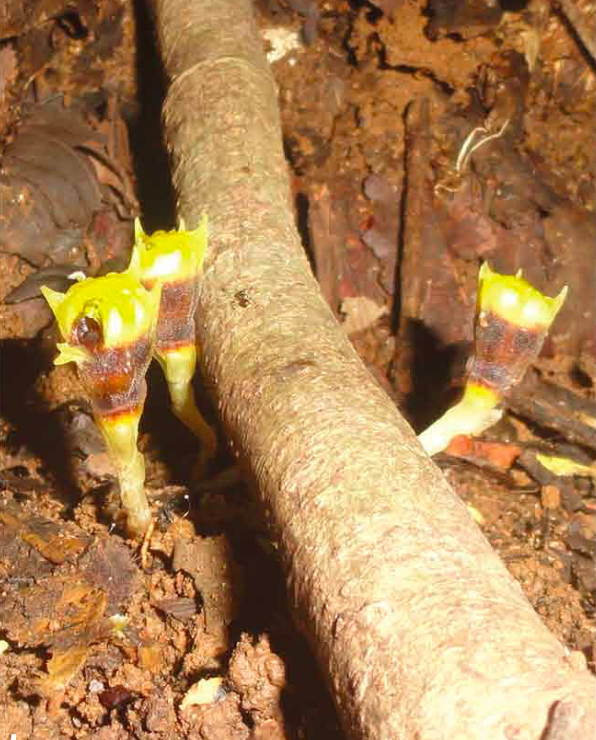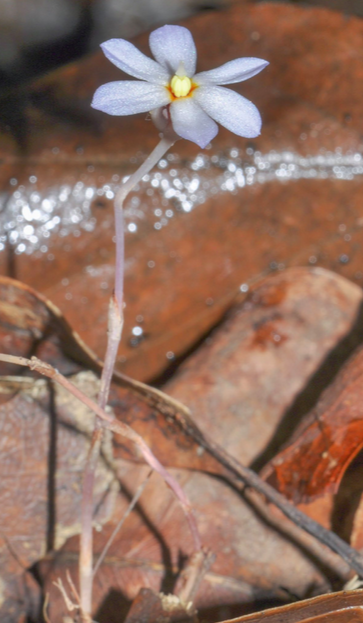Despite being often locally rare, mycoheterotrophic plants can have large distribution ranges, spanning many countries and even multiple continents. Likewise, many genera of mycoheterotrophic plants have broad distribution ranges. For example, Monotropa (Ericaceae) occurs throughout all temperate regions in the northern hemisphere, and even reaches tropical latitudes (on mountains). Sciaphila (Triuridaceae) can be found in nearly all tropical forests in the world.
Our knowledge of plant distribution ranges is based on plant collections. Once in a while, a new discovery significantly extends the known distribution range of a species, genus, or family. In the last few months, two new discoveries have been published that requires us to update the known distribution ranges of Thismia (Thismiaceae) and Geosiris (Iridaceae).
The genus Thismia is know from tropical rain forests in South America and Asia, and its distribution extends into subtropical and temperate areas in Japan, Australia, and New Zealand (and strangely enough also Chicago, USA). However, the genus is absent in the Pacific islands, Africa, Madagascar, and India. The latter can now be included in the list, since Indian researchers found a new species of Thismia in the Western Ghats. The new species, Thismia sahyadrica, is the first record of the genus from the Western Ghats, a tiny strip of rain forest in western India with biogeographical links to both Madagascar and Asia. The family Thismiaceae was already known to occur here (the enigmatic Haplothismia exannulata is endemic to the Western Ghats), but Thismia had so far only be found on Sri Lanka and not on the Indian main land.

Thismia sahyadrica from the Western Ghats (India) – Sujanapal et al. (2017)
A much larger expansion of distribution range is caused by the discovery of a new species of Geosiris in tropical Australia. Geosiris was know to occur only in eastern Madagascar (G. aphylla) and on the Comoros (G. albiflora). Recently, pictures emerged of a specimen of Geosiris from Mindanao, an island of the Philippines (see here), suggesting that the genus might have a much wider distribution than previously assumed. And indeed, the discovery of Geosiris australiensis, in a rain forest in Australia, a whopping 5,400 km from Madagascar, has now confirmed this.

Geosiris australiensis from Daintree National Park (Australia) – Grey & Low (2017)
These remarkable discoveries, once again, show us how much there is still to discover about these intriguing plants. And how important it is to keep looking. Expect the unexpected!
Sources:
Sujanapal et al. (2017) Thismia (Thismiaceae): the first record of the mycoheterotrophic genus to the Flora of India with a new species revealing the phytogeographical significance of Western Ghats. Blumea
Grey & Low (2017) First record of Geosiris (Iridaceae: Geosiridoideae) from Australasia : a new record and a new species from the Wet Tropics of Queensland, Australia. Candollea